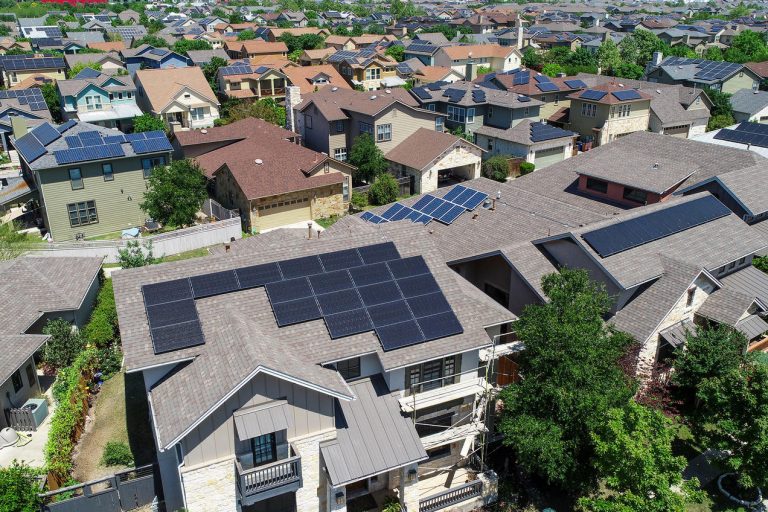Swimming pools offer a world of enjoyment, but the costs associated with heating them can be a real dampener. However, various ingenious ways help to tap into nature’s resources and warm your pool without breaking the bank.
This article will discuss several effective methods to heat your swimming pool using free and sustainable energy sources.
Embrace Solar Power
Harnessing the sun’s energy is a popular and eco-friendly method to heat your swimming pool. Solar pool heating systems, including a solar pool heater and liquid solar cover, use panels to capture sunlight. In addition, it helps to convert it into heat that then goes to the pool water. You can extend your swimming season and reduce energy bills by capitalizing on the sun’s power.
Installing solar panels or using liquid solar covers are effective ways to tap into renewable energy sources, ensuring your pool remains comfortably warm without needing conventional heating. Again, this benefits your wallet and contributes to a greener environment by reducing your carbon footprint.
Opt for Solar Rings or Sun Squares
Don’t overlook the effectiveness of solar rings or sun squares when considering ways to keep your pool warm. These ingenious solar pool covers are cost-effective alternatives to a traditional pool heater. Floating on the pool’s surface, solar rings and sun squares gather and store solar energy during the day.
As the sun sets, they continue to work by preventing heat loss, ensuring your pool remains comfortably warm throughout the night. These innovative solutions are an easy way to harness the sun’s power and reduce your reliance on conventional pool heating methods. Enjoy a well-heated pool without worrying about skyrocketing energy bills with solar rings or sun squares.
Utilize Pool Covers
The most straightforward yet impactful method to sustain pool temperatures is using pool covers. These simple tools offer remarkable effectiveness in heat conservation. A pool cover significantly minimizes heat loss caused by evaporation. Moreover, it also captures sunlight, generating a warming greenhouse-like effect.
According to the Lawrence Berkeley National Laboratory, utilizing pool covers can cause a reduction in heat loss—up to an impressive 95%. Besides, this data highlights pool covers role in preserving heat and minimizing the need for additional heating mechanisms like solar covers, heat pumps, or gas/electric heaters. With their proven efficiency, pool covers emerge as a vital component of any strategy that maintains a comfortably warm pool while keeping energy costs in check.
Try Liquid Solar Blankets
For an innovative approach to pool heating, consider using liquid solar blankets. These solutions create a thin, invisible layer atop your pool, acting as a barrier to curb heat loss via evaporation. Furthermore, this forward-thinking technique helps to prevent water and heat loss, effectively harnessing solar heat.
By incorporating liquid solar blankets into your pool maintenance routine, you can reduce dependence on traditional pool heaters, solar pool heaters, or even a pool heat pump. The advantage lies in their discreet nature, as they work their magic without altering the appearance of your pool. This cutting-edge strategy demonstrates that advancements in pool heating techniques are efficient and can blend seamlessly into your pool’s environment.
Harvest Geothermal Heat
Exploring the Earth’s innate warmth, geothermal heating systems harness a heat exchanger to convey heat from the ground to your swimming pool water. While it demands an upfront investment, geothermal heat proves to be a consistent and efficient enduring solution. This technique offers a sustainable alternative to conventional methods such as a solar pool heater or liquid solar covers.
By tapping into the Earth’s thermal energy, you can elevate your pool’s temperature without incurring exorbitant costs. Geothermal heating’s dependability, coupled with its minimal maintenance demands, makes it an appealing long-term choice. In the quest to maintain your pool’s warmth, considering the merits of geothermal heat unveils a pathway toward sustainable, eco-friendly pool temperature management.
Experiment with Wind Power
In regions prone to gusty winds, harnessing wind power can involve strategic landscaping with windbreaks such as trees and shrubs. These natural barriers are shields against the wind’s cooling influence on your pool. Notably, they diminish evaporation triggered by powerful winds, helping to uphold higher pool water temperatures.
This method synergizes well with other techniques like a liquid solar cover, a pool heater, or a solar cover. It ensures your pool remains comfortably warm while minimizing energy consumption. You take a creative step toward effective pool temperature management by transforming wind, which can usually lead to heat loss, into an ally that shields against temperature drops. Incorporating windbreaks into your pool environment demonstrates how working with nature can optimize pool temperature without compromising energy efficiency.
Optimize Pool Location and Design

Strategically situating your pool in a sun-drenched spot and fine-tuning its design can amplify solar exposure and heat preservation. By choosing an optimal location, complementing it with intelligent landscaping, and minimizing any structures that cast shadows, you empower the sun to warm your pool water efficiently.
This approach meshes seamlessly with other methods like solar covers or a pool heater. By allowing natural solar energy to take the lead, you’re tapping into an eco-friendly way of maintaining desired pool temperatures. Thoughtful planning of your pool’s location and layout minimizes reliance on additional heating sources. In addition, it also showcases the harmonious collaboration between nature and smart design in achieving pool temperature perfection.
Leverage Black Hose Method
Consider the black hose method for a simple and budget-friendly approach to pool heating. This ingenious DIY technique entails coiling a black hose in a sunny area and allowing water to flow through it. As the sun’s rays heat the hose, the water circulating inside absorbs this warmth, offering a straightforward and effective pool heating solution.
The black hose method is more valuable when combined with other strategies like using a solar cover or exploring gas or electric heaters. While it might not offer the precision and consistency of professional heating systems, it provides a low-cost option for extending your pool’s usability without straining your wallet. This method exemplifies the beauty of resourcefulness, demonstrating that sometimes, a bit of creativity and sunlight are all you need to enjoy a comfortably heated pool.
Build a Solar Water Heater
Crafting a solar water heater from repurposed materials is an economical choice for pool heating. This DIY venture encompasses channeling water through an arrangement of dark pipes or containers placed in direct sunlight. This setup harnesses solar energy to heat the water as it travels through, ensuring it returns to the pool at a more inviting temperature.
The solar water heater is an innovative complement to other methods, such as a solar cover. While it might not match the precision of commercial heating systems, it’s an accessible way to extend your pool’s seasonal use without straining your finances. This initiative showcases the beauty of sustainability and creativity, reminding us that a little ingenuity can go a long way in transforming sunlight into comforting pool warmth.
Investigate Heat Exchangers
Exploring heat exchangers introduces a method of tapping into alternative heat sources to warm your pool. This approach involves channeling heat from external sources like a wood stove or a solar water heater into your pool. While this method necessitates a supplementary heat source, it’s an efficient strategy to repurpose what would otherwise be unused warmth.
Pairing heat exchangers with other pool heating techniques, like solar cover, can optimize your pool’s temperature regulation. Although it requires initial investment and the availability of a suitable heat source, this method exemplifies resourcefulness by harnessing existing thermal energy. By considering heat exchangers, you’re delving into a realm of pool heating that highlights how innovation can make the most of different heat sources for a comfortably warmed swimming experience.
Explore Pool Aerators
Pool aerators, commonly employed to ensure water circulation and deter stagnation, can also help to warm your pool. These devices serve a dual purpose of reducing temperature stratification and promoting effective heat distribution throughout the pool by agitating the water’s surface.
When used together with methods like employing a solar cover, pool aerators become part of a comprehensive approach to temperature management. While they may not be a standalone solution for significant temperature increases, their role in enhancing heat distribution aligns well with other strategies. By exploring pool aerators, you’re tapping into a technique that maintains water quality and helps to achieve a more uniformly warmed pool environment.
Utilize Passive Solar Heating
Incorporating passive solar principles into your pool area’s design offers a natural approach to pool warming. By opting for dark-hued materials that readily absorb heat and strategically orienting the pool to capture abundant sunlight, you can harness solar energy to warm the water sans the need for extra equipment.
This method harmonizes well with other strategies like employing a solar cover, providing a comprehensive means of temperature management. Although passive solar heating might not yield rapid or drastic temperature changes, it underscores the effectiveness of thoughtful design in leveraging nature’s energy. By embracing this approach, you’re creating a pool environment that embraces sustainability and demonstrates the power of strategic planning in achieving a comfortably heated swimming space.
Consider Black Ball Blankets
An emerging solution seen in certain water reservoirs, black ball blankets offer innovation in pool heating. These buoyant spheres are deployed on the pool water surface, serving a dual purpose. They act as shields against evaporation and heat loss, while also absorbing the sun’s rays to contribute to the warming process.
When employed alongside other methods like using a solar cover, black ball blankets enhance your pool water’s temperature management strategy. Their ability to minimize heat loss through evaporation and actively harness solar energy showcases their effectiveness in maintaining pool warmth. While this method might be unconventional, its utility in larger water bodies underscores its potential in smaller-scale applications, providing an intriguing approach to optimizing pool temperature without compromising energy efficiency.
Opt for Efficient Pump Timings
Choosing strategic pump operation timings can significantly enhance your pool heating efforts. By running your pool pump during peak sunlight hours, you capitalize on the sun’s strength to circulate and warm the water. This optimized schedule aligns with the sun’s intensity, amplifying the effectiveness of your chosen heating methods.
Pairing this approach with other strategies, such as the use of solar covers or pool heaters, creates a comprehensive approach to temperature management. By coordinating pump operation with the sun’s cycle, you’re ensuring that your pool water benefits from natural warmth while minimizing energy consumption. This method underscores the importance of synchronization between energy usage and the environment’s rhythms, showcasing how a small adjustment in pump timings can make a significant impact on pool heating efficiency.
Conclusion
Heating your swimming pool without incurring exorbitant energy costs is an achievable goal. By embracing solar power, utilizing pool covers, exploring geothermal and wind energy, optimizing your pool’s location and design, and trying various innovative methods, you can enjoy a warm pool while minimizing your environmental footprint. Remember to consider your specific needs, budget, and the abundant resources available from reputable government and educational sources as you embark on your journey to heat your pool for free.







